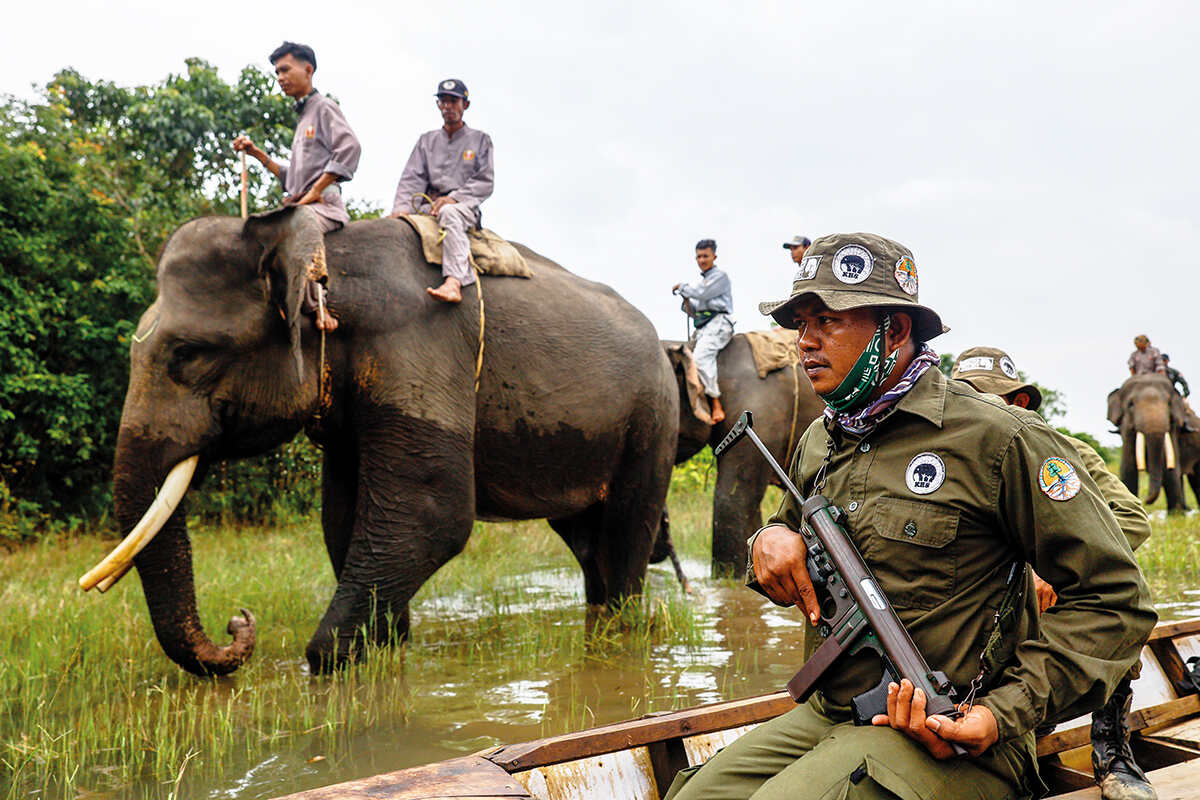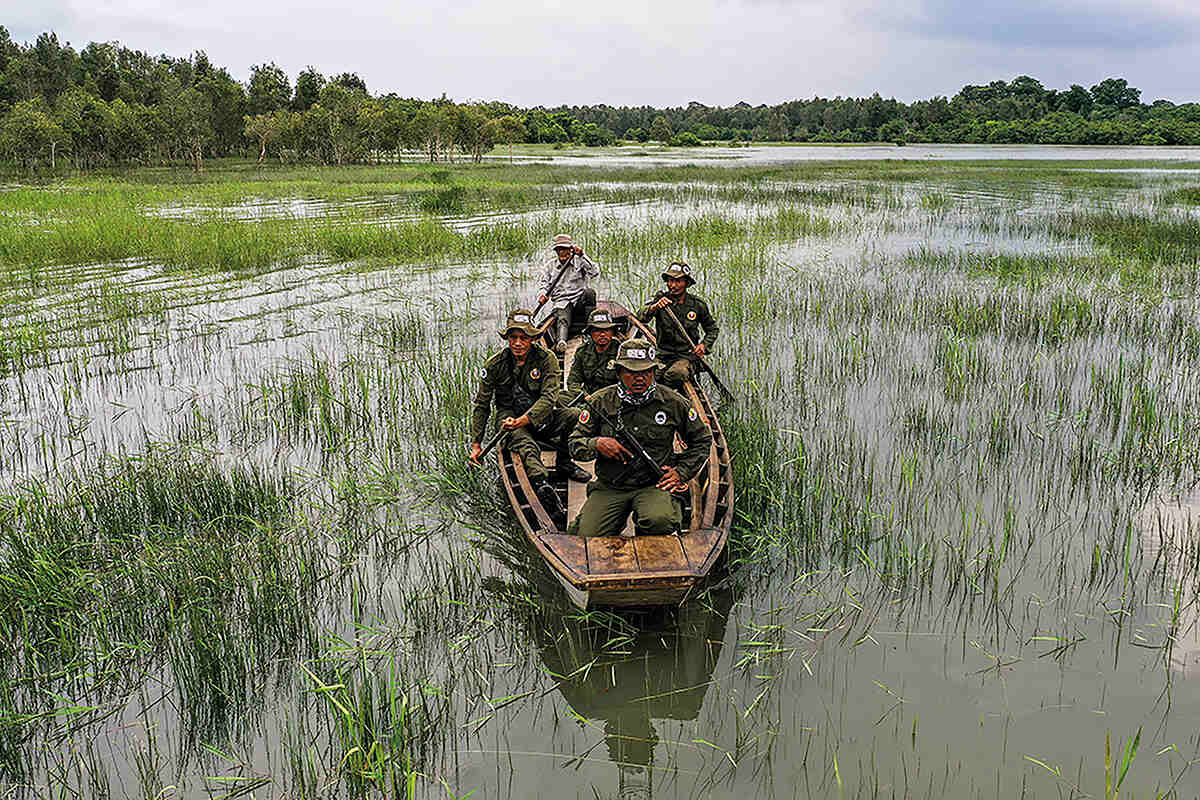
In a bid to stop endangered wild elephants straying into villages and destroying homes and crops, a unit of trained elephants is being used in Sumatra’s Way Kambas National Park
Words and photographs by Garry Lotulung
Way Kambas in southern Sumatra was once a vast game reserve of wild rainforest, stretching over 1,300 square kilometres, in which Dutch colonists could hunt tigers, rhinos and elephants. In 1989, after Indonesia gained independence, it was declared a national park, but it was soon under pressure from local villagers claiming traditional land rights.
The fast-growing Indonesian population ratcheted up the encroachments into the southern edge of the national park, with locals desperate for land to grow crops. Over the following decades, the park lost more than 40 per cent of its forest coverage.
Wildlife across the whole of Sumatra has come under intensive threat from habitat loss. Half the population of the Sumatran elephant has been lost in a generation, and the International Union for Conservation of Nature now lists the species as critically endangered.
Way Kambas National Park and parts of Aceh province in the north are today the last remaining strongholds of the wild elephants, which were once widespread on the island, with at least 44 different sub-populations.
By 2008, 23 of these groups were locally extinct and only around 1,000 individuals are left in the wild today.


Throughout this time, with the incursion of roads, illegal logging has steadily grown in Way Kambas, along with poaching, often organised by corrupt officials and military officers.
In 2010, in a bid to make the park an effective conservation tool, Indonesian authorities evicted squatters from more than 6,000 hectares of the park. However, that created further problems for wildlife. Wells left behind by relocated communities have proven to be deadly traps for animals, including baby elephants, rhinos and tigers. In an effort to stop the fatalities, between 2008 and 2010, around 2,000 wells were closed.
Despite the national park being considered a priority in conservation terms, in the past decade, 22 carcasses of elephants have been found inside its confines – killed either by locals trying to protect their homes and crops along its boundaries or by poachers targeting ivory.
The elephants wander beyond the park’s boundaries and destroy crops and homes. In the past 12 years, elephants have killed or injured 24 people in villages and destroyed untold amounts of produce. Farmers have dug trenches to protect their fields, modified their cropping patterns and frequently stand guard at night.
But the tensions remain. One tactic the authorities use to defuse the conflict with the farmers and deter poachers is to use patrols of trained elephants to stop their wild counterparts from straying into agricultural areas.

The Elephant Rescue Unit, comprised of forest rangers, mahouts and elephants from the Indonesian government’s elephant centres, patrols hotspots and herds wild elephant populations away from conflict.
In the north of Sumatra, the position is even more dire. Recently, the Indonesian central government granted 8,000 hectares of land to former combatants of the Free Aceh Movement in a bid to solve a long-running insurgency. This is likely to increase the pressure on land use in the area considerably. The local government has frozen new palm oil plantations after more than a decade of intense land clearing, which had fragmented the elephants’ habitats.


The latest population survey by the Indonesian Elephant Conservation Forum has shown that nearly half of Sumatra’s elephant population lives in the remaining patches of wild forest in the Aceh area of the north of the island.
‘Aceh is our best hope,’ said Wahdi Azmi, a conservationist who leads CRU Aceh, a local conservation group. Across the province, 392–456 elephants still remain, according to the latest assessment.
‘More than 85 per cent of Sumatran elephants live outside conservation areas,’ Azmi said. In Aceh, there are four to five human–elephant conflicts reported every day, he added. The influx of the former insurgents is likely to intensify the problem.




